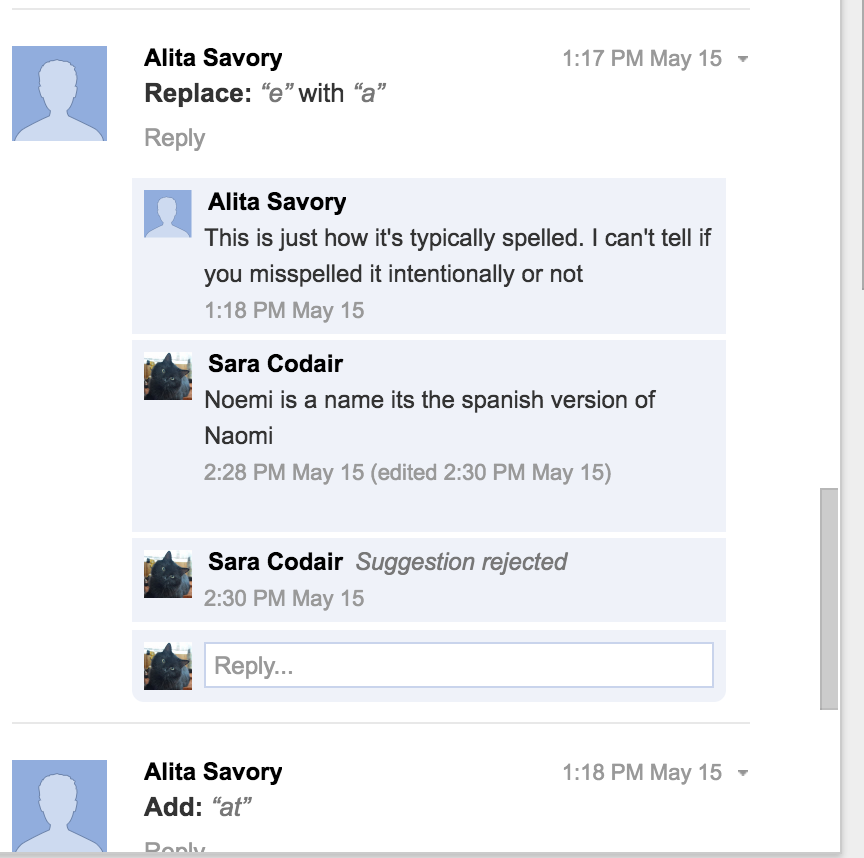Collaboration Makes Editing Better By Sara Codair
Editing can be fun when done collaboratively. However, it is torture to do it alone.
Back when I worked for a newspaper, my editor was my boss. He assigned me stories, approved the ones I came up with myself, and he edited them before they went to print. Once I sent a story to him, I usually didn’t see it again until it ran in the newspaper. It worked the same way when I edited the student newspaper at my college. People would send me the stories, I’d edit them, do the layout for my section, and pass it on to the copy-editor. It was a very distant, tedious process, and I never liked it.
Editing my own writing has always seemed like a chore too. I love making up stories. I enjoy revising them, honing my ideas, altering sentence structure or word choice, and rewriting dialogue to make it more natural. I don’t mind cutting and rewriting scenes, or altering my plot. However, when it comes time to find misplaced or missing commas, I procrastinate like I’m still in high school.
This is partially because I’m not good at self-editing. I don’t always read whole words, so sometimes I don’t see that a to has an extra o, or that I put an apostrophe in a possessive its. I know the rules; I know how the sentence is supposed to look. I can teach people how to be better editors than I am. However, my eyes and my brain don’t communicate. I see what I think I wrote and not what I actually wrote.
At this point, I think I’ve tried every editing strategy in the book: I read out loud, I read to people, I read on different mediums, I read backwards, and I use control f to find errors that repeat. I still don’t catch them all. It’s awfully time consuming, so sometimes, if I know I’m not going to get paid (like for posts on my blog) I don’t bother because I know I won’t catch everything anyways.
The only way I can truly eliminate all the errors in a work I wrote is by collaborating with another person. Google docs and track changes make this easy. They’re not as harsh as letting someone scribble all over my precious story in red ink, and they give the author more agency in deciding what edits to accept or reject. I seldom reject edits, but having the option too reaffirms my ownership of the piece.
Today, I received a document marked up with track changes for a novelette that is going to be published by NineStar Press. Not only did I have a choice in whether or not to accept the edits, but the person who made them even explained why certain things had to be hyphenated or why she added a comma. Some of the explanations were things I already knew, and some were specific to Chicago Style, which I am pretty rust on.
Because this editor took the time to turn on track changes and explain some of the choices she was making, I was engaged in the process. I wasn’t blindly hitting accept. I was thinking about each edit, and paying enough attention to notice things we both had missed at some point in the process.
I’ve also worked with editors through Google docs. This is my favorite. It does all the things that track changes does, but allows the writer and editor to see each others work in real time, and serves as a platform for discussion.
 Last week, a friend of mine was reading a piece of my flash fiction. She thought I spelled a name wrong. She changed Noemi to Naomi. I was able to reject the change and reply telling why I choose the spelling I did. Earlier in the year, if when editor suggested a change I wasn’t comfortable with, I was able to directly reply to her comment, starting a conversation that resulted in a change we were both happy with.
Last week, a friend of mine was reading a piece of my flash fiction. She thought I spelled a name wrong. She changed Noemi to Naomi. I was able to reject the change and reply telling why I choose the spelling I did. Earlier in the year, if when editor suggested a change I wasn’t comfortable with, I was able to directly reply to her comment, starting a conversation that resulted in a change we were both happy with.
Over the past two years, I’ve learned that I can’t edit alone, but with technology, the help of friends, and the editors of the publications I sent my work to, the process can be more engaging and less tedious than it was when I was a reporter.